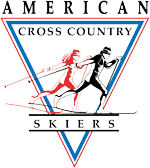Resources for
Join AXCS
The following is a translated and summarized from an article originally appearing in Norway’s SkiSport and originally appeared in the Number 6, 1995 issue of Nordic Update. Many thanks to Nat Brown for translation and summary of this material.
AXCS Editor Notes: For all his prowess on the ski trails, Bjorn Daehlie was not particularly prolific with public information articles back in the day and really hasn't been much more visible since. Some would say Bjorn tailored his focus on his own skiing and that was part of his secret to success. At any rate, this short and sweet list of kick waxing tips is exceptionally good even decades after originally appearing.
Bjorn Daehlie’s Waxing Tips For Citizen Racers
There are many kinds of waxes. Don’t allow yourself to be influenced by each and every one and get stuck with a whole lot of different kinds from different manufacturers. If you do that, you can be sure you’ll never learn how to use all the waxes! As much as possible, keep to one brand, and get to know it.
In dry conditions, it’s enough to have 4 or 5 waxes, and of these, 2 or 3 should be for around zero C or 32 F. If you also have 3 or 4 klisters, you are well equipped. The ordinary waxes are good enough in minus temperatures and in low humidity. Fluor waxes are an advantage when there is high humidity and the temperature is around zero Celsius or warmer.
If you want to buy fluor klisters, Universal is the first one you should get and test in training, so that you know how to use it. Many skiers let these wait until races, and then it’s too late to test them. This way, results are often not what was intended.
Rough your kick zone up with 150 or 180 grit sandpaper before you apply wax. The first layer of hard wax should always be melted in so that it binds to the ski. Use the day’s wax as a base and not always a harder wax; that’s something we used to do a long time ago. Remember to apply many thin layers, rather than few and thick. The kick zone always ends at the front edge of the heel.
Open flame should be used only when putting on klister. We always put down a thin layer of slightly harder klister first, so that the softer klisters have something to bind to. The softer klister is also applied to a slightly shorter area than the hard, and is put on from around the middle of the boot forward. We often apply different klisters and then rub them out with the heel of the hand. After we finish, we pass a torch over the klister to smooth it out.
If we are going to put hard wax over klister, as we often do in colder temperatures, the skis have to be set out to cool first. Crayon the wax on lightly, and use the cork very carefully. If we go too hard here it gets too warm and the klister lumps up.
When it comes to skis, don’t forget soft skis. They glide just as well as stiff skis, and are easier to get good kick out of. All skis are stone ground today, and many are both belt sanded and stone ground, in order to ensure that they’re flat both across and lengthwise.
